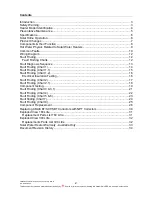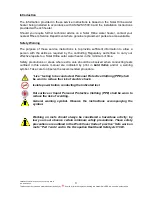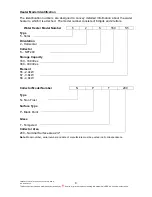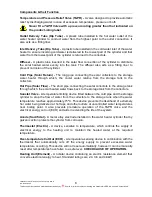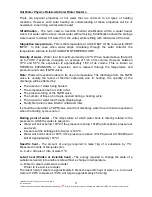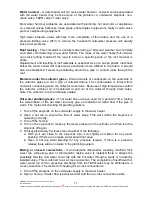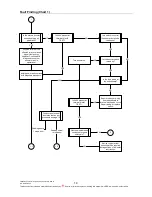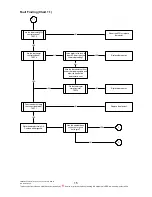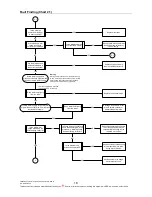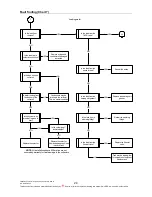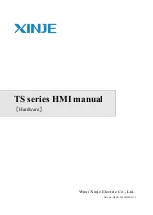
TM005 Rheem Solar Hiline Service Instructions REV D
D.O.I 20/02/2009
This document is stored and maintained electronically by
Service. All printed copies not bearing this statement in RED are deemed “uncontrolled”.
11
Water hammer -
A water heater will not cause water hammer, however valves associated
with the water heater may be the source of the problem i.e. cold-water stopcock, non-
return valve, T&PR valve or relief valve.
Most water hammer problems are associated with plumbing, hot and cold, or appliances
i.e. solenoid valves, ballcocks, loose pipes, sharp angles in pipe work, faulty or worn valve
parts or neighbouring equipment.
High water pressure areas will have more complaints of this nature and the use of a
pressure-limiting valve (PLV) to reduce the household cold-water pressure will usually
solve most problems.
Roof leaking -
This complaint is usually made during or after wet weather and normally
soon after commissioning a new water heater. The mass of the water heater full of water
can crack roofing material if the load is borne on specific points or the roof material is
brittle.
Replacement and levelling of roof materials is essential. Use of a woven plastic roof sheet
below the water heater will make water penetration more difficult in the future. It should
also be established if water is penetrating around the pipe or conduit joints through the
roof.
Moisture under the collector glass -
Small amounts of condensate on the underside of
the collector glass are not a sign of collector failure. The condensation is formed from
humid air condensing when the collector cools down. Because of high temperatures within
the collector, ambient air is transferred in and out of the collector through drain holes.
Note: The collector is not hermetically sealed.
Hot water plumbing leaks -
If hot water has not been used for a period of time, feeling
the temperature of the hot water line may give an indication of water flow if the pipe is
warm. The method of checking for plumbing leaks is:
1. Turn off the stopcock on the cold water supply to the water heater.
2. Open a hot tap to ensure the flow of water stops. This will confirm the stopcock is
operating correctly.
3. Turn off the hot tap.
4. Turn on the stopcock to make up the water pressure in the cylinder, and then turn the
stopcock off again.
5. Wait approximately 5 minutes then do either of the following:
a. With your ear close to the stopcock turn it on slightly and listen for any water
passing. If there are no leaks, water should not pass.
b. Open a hot tap while listening for any pressure release. If there is a pressure
release there will be no leaks in the plumbing system.
Mixing or crossed connections -
If an automatic dishwasher, washing machine, flick
mixer tap, tempering valve or thermostatic mixing valve is installed there is always the
possibility that the cold water could mix with the hot water through a faulty or incorrectly
installed valve. This is referred to as a cross connection. The complaints of insufficient hot
water, water too cold or excessive discharge from the T&PR valve may be attributed to a
cross connection. The method of checking for a cross connection is:
1. Turn off the stopcock on the cold water supply to the water heater.
2. Open a hot tap. If water flow is persistent and cold then a cross connection exists.


